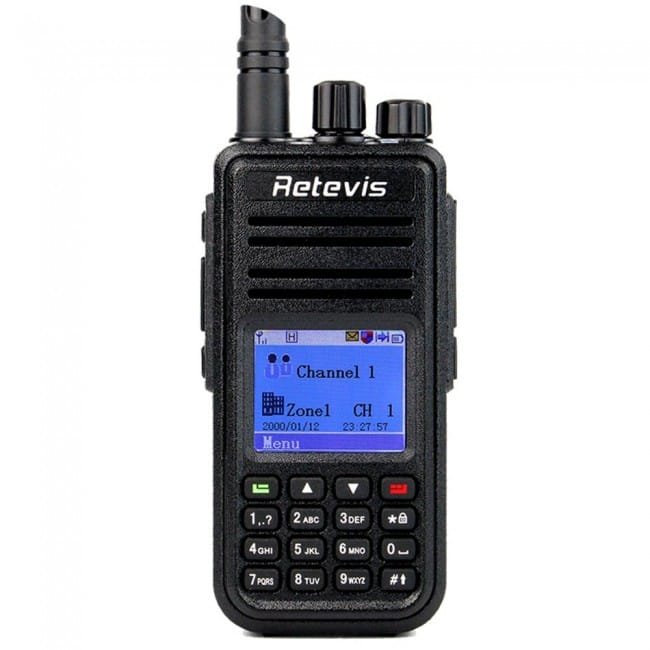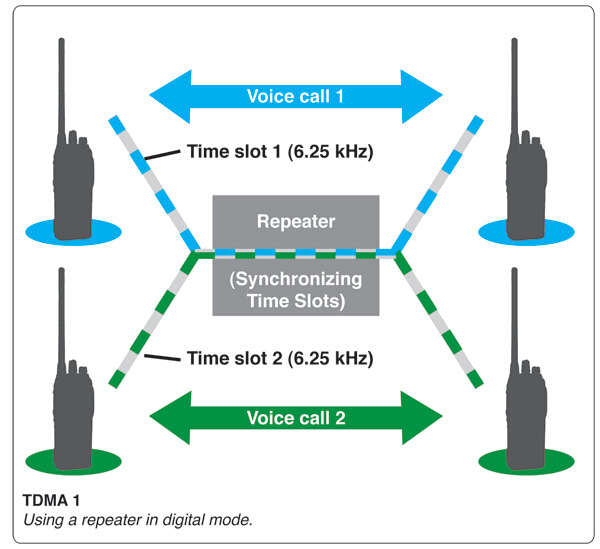Digital Mobile Radio (DMR) is a digital radio standard specified for professional mobile radio (PMR) users developed by the European Telecommunications Standards Institute (ETSI), and first ratified in 2005.
What is DMR?
Digital mobile radio (DMR) is an open digital radio standard for professional mobile radio (PMR) users specified in the European Telecommunications Standards Institute (ETSI) Standard TS 102 361 parts 1-4 and used in products sold in all regions of the world. The applicable ETSI emissions compliance standards are EN 300 113 and EN 300 390. The standard was first published in 2005 and has been widely adopted by radio manufacturers and users. Products built to the DMR standard also comply with the U.S. Federal Communications Commission (FCC) mandates in the United States for the use and certification of 12.5 kHz and 6.25 kHz narrow band technology for systems covered by Part 90 regulations.
Read more on http://en.wikipedia.org/wiki/Digital_Mobile_Radio
The standard is designed to operate within the existing 12.5kHz channel spacing used in licenced land mobile frequency bands globally and to meet future regulatory requirements for 6.25kHz channel equivalence. The primary goal is to specify affordable digital systems with low complexity. DMR provides voice, data and other supplementary services. Today, products designed to its specifications are sold in all regions of the world.
The DMR protocol covers unlicensed (Tier I), licensed conventional (Tier II) and licensed trunked (Tier III) modes of operation, although in practice commercial application is today focussed on the Tier II and III licensed categories.
What are the different types of DMR?
(1) Tier I : Unlicenced
DMR Tier I products are for license-free use in the 446MHz band.
Tier I provides for consumer applications and low-power commercial applications, using a maximum of 0.5Watt RF power. With a limited number of channels and no use of repeaters, no use of telephone interconnects, and fixed/integrated antennas, Tier I devices are best suited for personal use, recreation, small retail and other settings that do not require wide area coverage or advanced features.
(2)Tier II : Convertional DMR
Tier II covers licensed conventional radio systems, mobiles and hand portables operating in PMR frequency bands from 66-960MHz. The ETSI DMR Tier II standard is targeted at users who need spectral efficiency, advanced voice features and integrated IP data services in licensed bands for high-power communications. ETSI DMR Tier II specifies two-slot TDMA in 12.5kHz channels.
Tier II products are commercially available today.
(3)Tier III : Trunked
Tier III covers trunking operation in frequency bands 66-960MHz. The Tier III standard specifies two-slot TDMA in 12.5kHz channels. Tier III supports voice and short messaging handling similar to MPT-1327 with built-in 128 character status messaging and short messaging with up to 288 bits of data in a variety of formats. It also supports packet data service in a variety of formats, including support for IPv4 and IPv6.
Tier III products are commercially available today.
DMR standard relies on TDMA (Time Division) techniques, which relies on creating two 2 “virtual” channels within a single existing channel by transmitting information in “time slots”.
What is TDMA ?
TDMA (time division multiple access) is a technology used in digital cellular telephone communication that divides each cellular channel into three time slots in order to increase the amount of data that can be carried.
DMR Markets & Applications
The DPMR is a system used only by institutions and civil or commercial organizations. The DMR was born for the same use, but the ham radio people have chosen it to set up a new radio network with DMR system.
the DMR was granted to the amateur radio service. Radio Amateurs around the world use it . with the network of repeaters can talk to the whole world.
To stay updated on new articles in this series, remember to send your email address to via email : kam@retevis.com . We will inform u once we have new blog update.
Views: 1792




